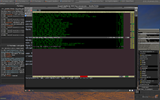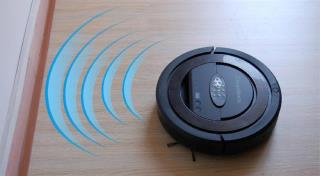Kā instalēt Tiny Tiny RSS lasītāju FreeBSD 11 FAMP VPS
Vai izmantojat citu sistēmu? Tiny Tiny RSS Reader ir bezmaksas un atvērtā koda pašmitināts tīmekļa ziņu plūsmas (RSS/Atom) lasītājs un apkopotājs, kas paredzēts
This tutorial demonstrates a full-featured email server running on OpenBSD using OpenSMTPD, Dovecot, Rspamd, and RainLoop. OpenSMTPD is the default mail server for OpenBSD. Choose a Vultr Compute Cloud instance with plenty of storage for the expected number of users.
Set up your user account to perform tasks as root.
su -
usermod -G wheel <username>
echo "permit nopass keepenv :wheel" > /etc/doas.conf
exit
Set up the package repository for OpenBSD.
doas su
echo "https://cdn.openbsd.org/pub/OpenBSD" > /etc/installurl
exit
Add the required packages.
doas pkg_add opensmtpd-extras opensmtpd-filter-rspamd dovecot dovecot-pigeonhole rspamd redis
By default, OpenSMTPD only listens on localhost. It must be explicitly configured to listen on external interfaces. It should be configured to use virtual users instead of system users for security.
Backup the default /etc/smtpd.conf file and create a new one from scratch.
cd /etc/mail
mv smtpd.conf smtpd.conf.default
Create a new smtpd.conf as shown below. Replace example.com with your domain. This initial configuration does not activate the rspamd filter while testing OpenSMTP. The spam filter will be activated later.
pki "mail" cert "/etc/ssl/mail.crt"
pki "mail" key "/etc/ssl/private/mail.key"
table aliases file:/etc/mail/aliases
table credentials passwd:/etc/mail/credentials
table virtuals file:/etc/mail/virtuals
filter "rspamd" proc-exec "/usr/local/libexec/smtpd/filter-rspamd"
# To accept external mail, replace with: listen on all
# listen on all tls pki "mail" hostname "mail.example.com"
listen on egress port submission tls-require pki "mail" hostname "mail.example.com" \
auth <credentials>
action "local_mail" mbox alias <aliases>
action "domain_mail" maildir "/var/vmail/example.com/%{dest.user}" \
virtual <virtuals>
action "outbound" relay
# Uncomment the following to accept external mail for domain "example.org"
# match from any for domain "example.com" action "domain_mail"
match from local for local action "local_mail"
match from local for any action "outbound"
match auth from any for any action "outbound"
OpenSMTPD and Dovecot can share an authentication database. This database resembles the system password file in format, with two extra fields for Dovecot. The two special fields define the virtual home directory and the mail location. Passwords are in blowfish format. This tutorial creates three example users.
Generate the passwords and concatenate them to the /etc/mail/credentials file.
doas su
smtpctl encrypt example_password1 >> /etc/mail/credentials
smtpctl encrypt example_password2 >> /etc/mail/credentials
smtpctl encrypt example_password3 >> /etc/mail/credentials
exit
The output looks similar to this:
$2b$10$agmNBPvFm1zqCjbbZC3JbO4Ns2jJNZQfTS45MAnKi.IPrkKITyTa6
$2b$10$LwkcKVVnwG8hDxu2W4YKD.K0kQ2oylOmQ9SBUb0hIopBsmNxYPb4e
$2b$10$bgLW/GMZyRXKbROgRQIvRu4xbeOqOJJXlgEAKuS5sIrBvfdPvEzeq
Edit /etc/mail/credentials to add the required fields. Each line maps to a system account, vmail, with UID and GID of 2000. Replace example.com with your domain. The virtual user name is the complete email address.
[email protected]:$2b$10$agmNBPvFm1zqCjbbZC3JbO4Ns2jJNZQfTS45MAnKi.IPrkKITyTa6:vmail:2000:2000:/var/vmail/example.com/john::userdb_mail=maildir:/var/vmail/example.com/john
[email protected]:$2b$10$LwkcKVVnwG8hDxu2W4YKD.K0kQ2oylOmQ9SBUb0hIopBsmNxYPb4e:vmail:2000:2000:/var/vmail/example.com/adam::userdb_mail=maildir:/var/vmail/example.com/adam
[email protected]:$2b$10$bgLW/GMZyRXKbROgRQIvRu4xbeOqOJJXlgEAKuS5sIrBvfdPvEzeq:vmail:2000:2000:/var/vmail/example.com/natalie::userdb_mail=maildir:/var/vmail/example.com/natalie
/etc/mail/credentials permissions to read-only for _smtpd and _dovecot system users.Create the vmail system user, group, and home directory.
When you create the vmail system user, you will receive the following warning: useradd: Warning: home directory '/var/vmail' doesn't exist, and -m was not specified. This is expected. This avoids cluttering the directory with dot files from /etc/skel. They are not required because the vmail account does not allow login.
doas chmod 0440 /etc/mail/credentials doas chown smtpd:dovecot /etc/mail/credentials doas useradd -c "Virtual Mail Account" -d /var/vmail -s /sbin nologin -u 2000 -g =uid -L staff vmail doas mkdir /var/vmail doas chown vmail:vmail /var/vmail
Create /etc/mail/virtuals to define the valid email addresses.
/var/vmail/example.com/<user>.Mail delivery attempted for addresses not defined in this file will be bounced with a Delivery Status Notification.
[email protected]: [email protected] [email protected]: [email protected] [email protected]: [email protected] [email protected]: [email protected] [email protected]: vmail [email protected]: vmail [email protected]: vmail
This example uses a self-signed certificate. Use a valid signed certificate if you have one. When prompted for the common name, be sure it matches the FQDN of the server. This example uses mail.example.com.
doas su
cd /etc/ssl
openssl genrsa -out private/mail.key 4096
openssl req -x509 -new -nodes -key private/mail.key -out mail.crt -days 3650 -sha256
chmod 0400 /etc/ssl/private/mail.key
exit
Use the OpenSMTPD configuration syntax checker. If no problems are found, restart the smtpd daemon.
doas smtpd -n
doas rcctl restart smtpd
From an outside mail account, send a test email to one of the users.
/var/vmail and deliver the mail to /var/vmail/example.com/<username>/new.1576339842.4d64757b.example.com:2,.Review the contents of the file, including all of the mail headers, to verify the email delivery works properly.
Return-Path: <n0244e80da3-54b1ed125c5342fc-adam===example.org@bounce.example.org>
Delivered-To: [email protected]
Received: from spruce-goose-ba.twitter.com (spruce-goose-ba.twitter.com [199.59.150.96])
by mail.example.com (OpenSMTPD) with ESMTPS id 75b514d3 (TLSv1.2:ECDHE-RSA-AES256-GCM- SHA384:256:NO)
for <[email protected]>;
Sat, 14 Dec 2019 11:10:40 -0500 (EST)
DKIM-Signature: v=1; a=rsa-sha256; c=relaxed/relaxed; d=twitter.com;
s=dkim-201406; t=1576339839;
bh=jhKB5/w9v87GaXSuizT576ntJ/72gvLRDhsqmGQQrCE=;
h=Date:From:To:Subject:MIME-Version:Content-Type:List-Unsubscribe:
Message-ID;
b=TWn/QVUJ1VDlWiweWoanwHLABCL1nqmm0+TBzh3PjmYNm0quRMXB7QL2ykzHGME5A
DTz/JFHa0cOvQsrdhxxbjOLFKimK0nF+Ou5kI+2HzTzfVNZS0qGnTVP/tZyaIsWjjl
an5EiR6HFOHG4iClOOEOJW4oLDEZfPTefrlW+378bmHGIRUNDvVKrbXKunL9fJFAb3
JSrhWQNwbrF/aARFzw4nKfb1I7vTRSrN1eXE5JxzGwI2XAjqDIWdR5ExwUNbJH5ZPs
wQ85j8KLZEEgQkbH9CypgeUMJWsVK95FqOCCaqKMS10M7intGMb3aeiiFcB7yDHi9t
u7rVESm4eGp/g==
X-MSFBL: DM7pSZns+YDRgNEmGNre9aPjZTtc1tDlN97w5rQDBts=|eyJ1IjoibWF0dEBnb2J
sYWNrY2F0LmNvbUBpaWQjIzU0YjFlZDEyNWM1MzQyZmNiNThiMzVmNzI0NDZlMGF
mQHVzYiMjNkAyNDRAMTA4MjgwNTAxMDYzNzk1MDk3NkAwQDA4MjY5ZWI4OTI3YzR
kNTFiNTZkMjY3YzY2OGRmN2IwY2Y4M2ExZGIiLCJyIjoibWF0dEBnb2JsYWNrY2F
0LmNvbSIsImciOiJCdWxrIiwiYiI6InNtZjEtYmd4LTM0LXNyMS1CdWxrLjE4NiJ
9
Date: Sat, 14 Dec 2019 16:10:39 +0000
...
Dovecot requires the ability to have a larger number of files open for reading and writing than the default class allows. Failing to do this will cause errors that are difficult to troubleshoot.
Define a login class for the Dovecot daemon. At the bottom of /etc/login.conf add the following lines.
dovecot:\
:openfiles-cur=1024:\
:openfiles-max=2048:\
:tc=daemon:
Create /etc/dovecot/local.conf.
auth_mechanisms = plain
first_valid_uid = 2000
first_valid_gid = 2000
mail_location = maildir:/var/vmail/%d/%n
mail_plugin_dir = /usr/local/lib/dovecot
managesieve_notify_capability = mailto
managesieve_sieve_capability = fileinto reject envelope encoded-character vacation subaddress comparator-i;ascii-numeric relational regex imap4flags copy include variables body enotify environment mailbox date index ihave duplicate mime foreverypart extracttext imapsieve vnd.dovecot.imapsieve
mbox_write_locks = fcntl
mmap_disable = yes
namespace inbox {
inbox = yes
location =
mailbox Archive {
auto = subscribe
special_use = \Archive
}
mailbox Drafts {
auto = subscribe
special_use = \Drafts
}
mailbox Junk {
auto = subscribe
special_use = \Junk
}
mailbox Sent {
auto = subscribe
special_use = \Sent
}
mailbox Trash {
auto = subscribe
special_use = \Trash
}
prefix =
}
passdb {
args = scheme=CRYPT username_format=%u /etc/mail/credentials
driver = passwd-file
name =
}
plugin {
imapsieve_mailbox1_before = file:/usr/local/lib/dovecot/sieve/report-spam.sieve
imapsieve_mailbox1_causes = COPY
imapsieve_mailbox1_name = Junk
imapsieve_mailbox2_before = file:/usr/local/lib/dovecot/sieve/report-ham.sieve
imapsieve_mailbox2_causes = COPY
imapsieve_mailbox2_from = Junk
imapsieve_mailbox2_name = *
sieve = file:~/sieve;active=~/.dovecot.sieve
sieve_global_extensions = +vnd.dovecot.pipe +vnd.dovecot.environment
sieve_pipe_bin_dir = /usr/local/lib/dovecot/sieve
sieve_plugins = sieve_imapsieve sieve_extprograms
}
protocols = imap sieve
service imap-login {
inet_listener imaps {
port = 0
}
}
service managesieve-login {
inet_listener sieve {
port = 4190
}
inet_listener sieve_deprecated {
port = 2000
}
}
ssl_cert = </etc/ssl/mail.crt
ssl_key = </etc/ssl/private/mail.key
userdb {
args = username_format=%u /etc/mail/credentials
driver = passwd-file
name =
}
protocol imap {
mail_plugins = " imap_sieve"
}
There is a bug in Dovecot where the ssl_cert and ssl_key settings do not get overridden in the local.conf file so we have to comment them out. If you miss this step, Dovecot will fail to start correctly.
Edit /etc/dovecot/conf.d/10-ssl.conf as shown.
...
# PEM encoded X.509 SSL/TLS certificate and private key. They're opened before
# dropping root privileges, so keep the key file unreadable by anyone but
# root. Included doc/mkcert.sh can be used to easily generate self-signed
# certificate, just make sure to update the domains in dovecot-openssl.cnf
#ssl_cert = </etc/ssl/dovecotcert.pem
#ssl_key = </etc/ssl/private/dovecot.pem
...
Sieve scripts train Rspamd on spam and ham. Moving email into and out of the junk folder triggers an event to train Rspamd.
These files are located at /usr/local/lib/dovecot/sieve.
Create the report-ham.sieve file.
require ["vnd.dovecot.pipe", "copy", "imapsieve", "environment", "variables"];
if environment :matches "imap.mailbox" "*" {
set "mailbox" "${1}";
}
if string "${mailbox}" "Trash" {
stop;
}
if environment :matches "imap.user" "*" {
set "username" "${1}";
}
pipe :copy "sa-learn-ham.sh" [ "${username}" ];
Create the report-spam.sieve file.
require ["vnd.dovecot.pipe", "copy", "imapsieve", "environment", "variables"];
if environment :matches "imap.user" "*" {
set "username" "${1}";
}
pipe :copy "sa-learn-spam.sh" [ "${username}" ];
Compile the files.
sievec report-ham.sieve
sievec report-spam.sieve
Create the following two shell scripts in /usr/local/lib/dovecot/sieve
Add the following to sa-learn-ham.sh
#!/bin/sh
exec /usr/local/bin/rspamc -d "${1}" learn_ham
Add the following to sa-learn-spam.sh
#!/bin/sh
exec /usr/local/bin/rspamc -d "${1}" learn_spam
Make the files executable.
chmod 0755 sa-learn-ham.sh
chmod 0755 sa-learn-spam.sh
Enable and start Dovecot.
rcctl enable dovecot
rcctl start dovecot
Check that Dovecot started properly.
ps ax | grep dovecot
88005 ?? I 0:00.11 /usr/local/sbin/dovecot
69640 ?? I 0:00.03 dovecot/anvil
91207 ?? I 0:00.03 dovecot/log
98178 ?? I 0:00.19 dovecot/config
34712 ?? I 0:00.06 dovecot/stats
96674 ?? I 0:00.03 dovecot/imap-login
8891 ?? S 0:00.02 dovecot/imap
Verify Dovecot can correctly read /etc/mail/credentials
doveadm user [email protected]
field value
uid 2000
gid 2000
home /var/vmail/example.com/john
mail maildir:/var/vmail/example.com/john
Verify a mail user can log in.
doveadm auth login [email protected]
Password: ********
passdb: [email protected] auth succeeded
extra fields:
[email protected]
userdb extra fields:
[email protected]
mail=maildir:/var/vmail/example.com/john
uid=2000
gid=2000
home=/var/vmail/example.com/john
auth_mech=PLAIN
This is a basic Rspamd configuration, refer to the offical documentation for more details. This example creates a definition for our domain to enable DKIM signing.
Create a public/private keypair in /etc/mail/dkim and set the correct permissions.
doas su
mkdir /etc/mail/dkim
cd /etc/mail/dkim
openssl genrsa -out private.key 1024
openssl rsa -in private.key -pubout -out public.key
chmod 0440 private.key
chown root:_rspamd private.key
Create a DNS record for DKIM containing the public key. Refer to your DNS provider for details of how to create a DKIM record. Copy the contents from /etc/mail/dkim/public.key and paste it after the p= part of the DKIM record as shown below. Note this example also creates an SPF record.
default._domainkey.example.com. IN TXT "v=DKIM1;k=rsa;p=MIGfMA0GCSqGSIb3DQEBAQUAA4GNADCBiQKBgQClcuK3FV3Ug64li8iFsuJ2ykgb7FMZsujk9uG79ppPUp57vCfjzO7F+HBfx5qIwvlGxv2IJXK86FZwhpUX+HFCDUtfB2z0ZNGerWcZfNzM1w1Bru/fdMd2tCYkiHEa5RWIkLfs/Fm+neXxRZfAG2UDWmAghNbgzYv7xViwgufDIQIDAQAB"
example.com. IN TXT "v=spf1 a ip4:192.0.2.1 mx ~all"
Create a DMARC record.
_dmarc.example.com. IN TXT "v=DMARC1;p=none;pct=100;rua=mailto:[email protected]"
Create the /etc/rspamd/local.d/dkim_signing.conf configuration file.
The selector="default"; line is derived from the first part of the DKIM DNS record (default._domainkey....) created above.
domain {
example.com {
path = "/etc/mail/dkim/example.com.key";
selector = "default";
}
}
Enable and start Rspamd.
doas rcctl enable redis rspamd
doas rcctl start redis rspamd
Change the lines below in /etc/mail/smtpd.conf and restart OpenSMTPD to enable Rspamd.
...
listen on all tls pki "mail" hostname "mail.example.com" filter "rspamd"
listen on egress port submission tls-require pki "mail" hostname "mail.example.com" \
auth <credentials> filter "rspamd"
...
rcctl restart smtpd
Test the mail server with POP3 or IMAP email client. If you do not require webmail, stop here.
When prompted, please choose the most current version of PHP.
pkg_add php php-curl php-pdo_sqlite php-zip pecl73-mcrypt zip unzip wget curl
Fetch the RainLoop webmail tarball and extract it to /var/www/htdocs/.
Use the Standard Edition which includes an automatic updater.
cd /tmp
wget https://www.rainloop.net/repository/webmail/rainloop-latest.zip
unzip rainloop-latest.zip -d /var/www/htdocs/rainloop
chown -R www:www /var/www/htdocs
/etc/examples/acme-client.conf to /etcAdd the following lines at the bottom of the file:
domain webmail.example.com {
domain key "/etc/ssl/private/webmail.example.com.key"
domain full chain certificate "/etc/ssl/webmail.example.com.crt"
sign with letsencrypt
}
webmail.example.comEdit /etc/httpd.conf following the example below.
prefork 3
types { include "/usr/share/misc/mime.types" }
server "default" {
listen on egress port 80
root "/htdocs"
directory index index.html
location "/.well-known/acme-challenge/*" {
root "/acme"
request strip 2
}
}
Run the httpd syntax check.
httpd -n
Enable and start httpd.
rcctl enable httpd
rcctl start httpd
Request the Let's Encrypt certificate.
acme-client -v webmail.example.com
Add the server definitions for RainLoop to /etc/httpd.conf
server "webmail.example.com" {
listen on egress port 80
block return 302 "https://$SERVER_NAME$REQUEST_URI"
}
server "webmail.example.com" {
listen on egress tls port 443
root "/htdocs/rainloop"
directory index "index.php"
tcp { nodelay, backlog 10 }
tls {
certificate "/etc/ssl/webmail.example.com.crt"
key "/etc/ssl/private/webmail.example.com.key"
}
hsts {
max-age 31556952
preload
}
# Value below is 25MB in bytes. 1MB = 1048576 bytes
connection max request body 26214400
location "/data*" {
block return 403
}
location "*.php*" {
fastcgi socket "/run/php-fpm.sock"
}
}
Configure PHP to allow attachments up to 25 megabytes. Make the following changes in /etc/php-7.3.ini:
; Maximum allowed size for uploaded files.
; http://php.net/upload-max-filesize
upload_max_filesize = 25M
...
; Maximum size of POST data that PHP will accept.
; Its value may be 0 to disable the limit. It is ignored if POST data reading
; is disabled through enable_post_data_reading.
; http://php.net/post-max-size
post_max_size = 29M
Enable the necessary PHP modules by copying their configuration files to /etc/php-7.3/
cp /etc/php-7.3.sample/* /etc/php-7.3/.
Check the syntax of /etc/httpd.conf
httpd -n
Enable and start httpd and php-fpm.
rcctl reload httpd
rcctl enable php73_fpm
rcctl start php73_fpm
Browse to https://webmail.example.com/?admin.
The default username is: admin
The default password is: 12345.
Browse to each of the configuration sections and make your desired changes. Once you have finished with the configuration, log into webmail at https://webmail.example.com
Vai izmantojat citu sistēmu? Tiny Tiny RSS Reader ir bezmaksas un atvērtā koda pašmitināts tīmekļa ziņu plūsmas (RSS/Atom) lasītājs un apkopotājs, kas paredzēts
Vai izmantojat citu sistēmu? Wiki.js ir bezmaksas atvērtā pirmkoda moderna wiki lietotne, kas veidota uz Node.js, MongoDB, Git un Markdown. Wiki.js pirmkods ir publisks
Vai izmantojat citu sistēmu? Pagekit 1.0 CMS ir skaista, modulāra, paplašināma un viegla, bezmaksas un atvērtā koda satura pārvaldības sistēma (CMS) ar
Vai izmantojat citu sistēmu? MODX Revolution ir ātra, elastīga, mērogojama, atvērtā koda, uzņēmuma līmeņa satura pārvaldības sistēma (CMS), kas rakstīta PHP. Tas i
Šajā rakstā ir sniegti norādījumi par OpenBSD 5.5 (64 bitu) iestatīšanu KVM ar Vultr VPS. 1. darbība. Piesakieties Vultr vadības panelī. 2. darbība. Noklikšķiniet uz DEPLOY
Vai izmantojat citu sistēmu? osTicket ir atvērtā koda klientu atbalsta biļešu sistēma. osTicket pirmkods ir publiski mitināts vietnē Github. Šajā apmācībā
Vai izmantojat citu sistēmu? Flarum ir bezmaksas atvērtā koda nākamās paaudzes forumu programmatūra, kas padara tiešsaistes diskusijas jautras. Flarum pirmkods tiek mitināts o
Vai izmantojat citu sistēmu? TLS 1.3 ir transporta slāņa drošības (TLS) protokola versija, kas tika publicēta 2018. gadā kā piedāvātais standarts RFC 8446.
Ievads WordPress ir dominējošā satura pārvaldības sistēma internetā. Tas nodrošina visu, sākot no emuāriem līdz sarežģītām vietnēm ar dinamisku saturu
Vai izmantojat citu sistēmu? Subrion 4.1 CMS ir jaudīga un elastīga atvērtā pirmkoda satura pārvaldības sistēma (CMS), kas nodrošina intuitīvu un skaidru saturu.
Šī apmācība parādīs, kā konfigurēt DNS pakalpojumu, kuru ir viegli uzturēt, viegli konfigurēt un kas parasti ir drošāks nekā klasiskais BIN.
FEMP steks, kas ir salīdzināms ar LEMP steku operētājsistēmā Linux, ir atvērtā pirmkoda programmatūras kolekcija, kas parasti tiek instalēta kopā, lai iespējotu FreeBS.
MongoDB ir pasaules klases NoSQL datu bāze, ko bieži izmanto jaunākās tīmekļa lietojumprogrammās. Tas nodrošina augstas veiktspējas vaicājumus, sadalīšanu un replikāciju
Vai izmantojat citu sistēmu? Monica ir atvērtā koda personisko attiecību pārvaldības sistēma. Uztveriet to kā CRM (populāru rīku, ko izmanto pārdošanas komandas th
Ievads Šī apmācība parāda OpenBSD kā e-komercijas risinājumu, izmantojot PrestaShop un Apache. Apache ir nepieciešams, jo PrestaShop ir sarežģīts UR
Vai izmantojat citu sistēmu? Fork ir atvērtā koda SPS, kas rakstīta PHP. Forks pirmkods tiek mitināts vietnē GitHub. Šī rokasgrāmata parādīs, kā instalēt Fork CM
Vai izmantojat citu sistēmu? Directus 6.4 CMS ir jaudīga un elastīga, bezmaksas un atvērtā koda satura pārvaldības sistēma (CMS), kas izstrādātājiem nodrošina
VPS serverus bieži vērš iebrucēji. Izplatīts uzbrukuma veids sistēmas žurnālos tiek parādīts kā simtiem nesankcionētu ssh pieteikšanās mēģinājumu. Uzstādīt
Ievads OpenBSD 5.6 ieviesa jaunu dēmonu ar nosaukumu httpd, kas atbalsta CGI (izmantojot FastCGI) un TLS. Lai instalētu jauno http, nav jāveic papildu darbs
Šī apmācība parādīs, kā instalēt grupas programmu iRedMail uz jaunas FreeBSD 10 instalācijas. Jums vajadzētu izmantot serveri ar vismaz vienu gigabaitu.
Mākslīgais intelekts nav nākotnē, tas ir šeit, tagadnē. Šajā emuārā lasiet, kā mākslīgā intelekta lietojumprogrammas ir ietekmējušas dažādas nozares.
Vai arī jūs esat DDOS uzbrukumu upuris un esat neizpratnē par profilakses metodēm? Izlasiet šo rakstu, lai atrisinātu savus jautājumus.
Iespējams, esat dzirdējuši, ka hakeri pelna daudz naudas, bet vai esat kādreiz domājuši, kā viņi nopelna šādu naudu? pārrunāsim.
Vai vēlaties redzēt revolucionārus Google izgudrojumus un to, kā šie izgudrojumi mainīja katra cilvēka dzīvi mūsdienās? Pēc tam lasiet emuārā, lai redzētu Google izgudrojumus.
Pašpiedziņas automobiļu koncepcija izbraukt uz ceļiem ar mākslīgā intelekta palīdzību ir mūsu sapnis jau kādu laiku. Bet, neskatoties uz vairākiem solījumiem, tie nekur nav redzami. Lasiet šo emuāru, lai uzzinātu vairāk…
Zinātnei strauji attīstoties, pārņemot lielu daļu mūsu pūļu, palielinās arī risks pakļaut sevi neizskaidrojamai singularitātei. Izlasiet, ko singularitāte varētu nozīmēt mums.
Datu uzglabāšanas metodes ir attīstījušās kopš datu dzimšanas. Šajā emuārā ir aprakstīta datu uzglabāšanas attīstība, pamatojoties uz infografiku.
Lasiet emuāru, lai vienkāršākā veidā uzzinātu dažādus lielo datu arhitektūras slāņus un to funkcijas.
Šajā digitālajā pasaulē viedās mājas ierīces ir kļuvušas par būtisku dzīves sastāvdaļu. Šeit ir daži pārsteidzoši viedo mājas ierīču ieguvumi, lai padarītu mūsu dzīvi dzīves vērtu un vienkāršāku.
Nesen Apple izlaida macOS Catalina 10.15.4 papildinājuma atjauninājumu, lai novērstu problēmas, taču šķiet, ka atjauninājums rada vairāk problēmu, kas izraisa Mac datoru bloķēšanu. Izlasiet šo rakstu, lai uzzinātu vairāk








